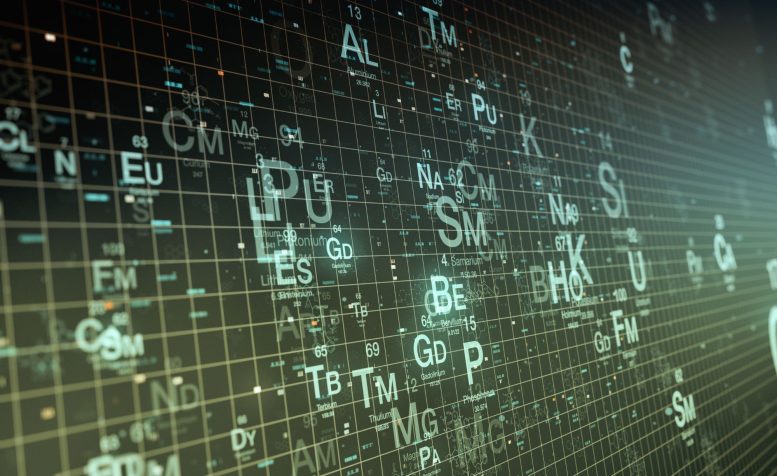
Scientists from leading global institutions are advancing our understanding of the periodic table by exploring superheavy elements and the theoretical “island of stability.” Their research, highlighted in prestigious scientific publications, seeks to uncover the properties of elements with over 103 protons and to predict their behavior through theoretical models. This work promises to expand the boundaries of the periodic table and impact a range of scientific fields.
Scientists from Massey University in New Zealand, the University of Mainz in Germany, Sorbonne University in France, and the Facility for Rare Isotope Beams (FRIB) discuss the limit of the periodic table and revising the concept of the “island of stability” with recent advances in superheavy element research. Their work is the cover feature of the February 2024 Nature Review Physics.
In addition to the Nature Reviews Physics feature, Physics Reports published a review on the atomic electronic structure theory for superheavy elements.
The Quest for Superheavy Elements
What is the heaviest bound nucleus and the heaviest bound atom and what are their properties? The nuclei of chemical elements with more than 103 protons are labeled as “superheavy.” They are part of a vast unknown territory of these nuclei that scientists are trying to uncover. Exploring this uncharted territory provides prospects for discoveries that connect the broad areas of science.
New experimental facilities are being built to help scientists uncover the properties of atoms and their nuclei in a regime of very large numbers of electrons, protons, and neutrons. The facilities will create new elements and nuclides at the limits of atomic number and mass.
The production rates of superheavy nuclei are exceedingly low. The physical and chemical data obtained from these experiments has indicated deviations from lighter elements and isotopes. This allows scientists to question how much further the borders of the Periodic Table of the Elements and the Chart of the Nuclides can be expanded. Assessing the existence of the “peninsula of extended stability,” where superheavy nuclei could have lifetimes beyond the very short lived one discovered up to now, is also a scientific goal.
Theoretical Advances and the Future of Superheavy Elements
In addition, the progress of atomic structure theory focuses on superheavy elements and their predicted electronic ground state configurations, which are important for an element’s placement in the periodic table.
“Due to the presence of huge electrostatic forces, electrons in superheavy atoms move with velocities close to light speed,” said one of the authors of the paper, Witek Nazarewicz, John A. Hannah Distinguished Professor of Physics and chief scientist at FRIB. “Also, very strong Coulomb forces in superheavy nuclei give rise to new effects. This is a new ball game for atomic and nuclear theory.”
At FRIB, scientists will study ways to reach superheavy nuclei located more closely toward the region of enhanced stability. Many superheavy nuclei cannot be measured currently, so information about them must come from theoretical extrapolations. Nuclear theorists at FRIB carry out predictions for superheavy nuclei using advanced models aided by high-performance computing and machine learning.
Studying the Periodic Table of Elements and the nuclear landscape in the superheavy region will generate new ideas and methods that will impact nuclear and atomic physics, astrophysics, and chemistry.
References: “The quest for superheavy elements and the limit of the periodic table” by Odile R. Smits, Christoph E. Düllmann, Paul Indelicato, Witold Nazarewicz and Peter Schwerdtfeger, 11 December 2023, Nature Reviews Physics.
DOI: 10.1038/s42254-023-00668-y
“Pushing the limits of the periodic table — A review on atomic relativistic electronic structure theory and calculations for the superheavy elements” by O.R. Smits, P. Indelicato, W. Nazarewicz, M. Piibeleht and P. Schwerdtfeger, 13 October 2023, Physics Reports.
DOI: 10.1016/j.physrep.2023.09.004
This material is based upon work supported by the U.S. Department of Energy, Office of Science, Office of Nuclear Physics (DOE-SC), Program Hubert Curien Dumont d’Urville New Zealand, and the Marsden Fund of the Royal Society of New Zealand.
Michigan State University (MSU) operates the Facility for Rare Isotope Beams (FRIB) as a user facility for the U.S. Department of Energy Office of Science (DOE-SC), supporting the mission of the DOE-SC Office of Nuclear Physics. User facility operation is supported by the DOE-SC Office of Nuclear Physics as one of 28 DOE-SC user facilities.

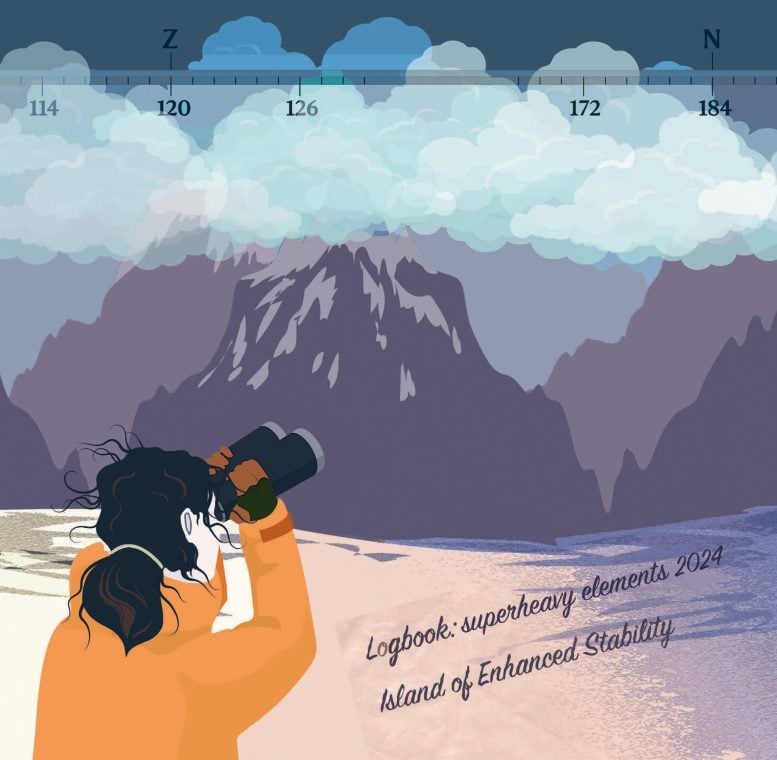



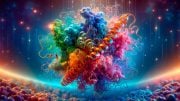
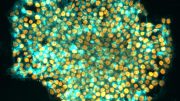
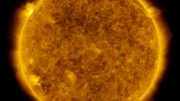


The progress of atomic structure theory focuses on superheavy elements and their predicted electronic ground state configurations, which are important for an element’s placement in the periodic table.
Do researchers understand the most basic ground state configurations?
Topological vortex and its twin anti-vortex may have three tenses in the interaction.
(a) Uniform rotation and keep the ground state.
(b) Accelerate rotation and shrink toward the center.
(c) Decelerate rotation and expand outward.
If researchers are interested, you can browse https://zhuanlan.zhihu.com/p/595280873.
Science must eliminate falsehood and preserve truth. The things that researchers can observe in experiments are always superficial phenomena, not essential.
According to topological vortex gravitational field theory, spin creates everything, spin creates the world, spin creates the future. In the interaction of topological vortices, time is both absolute and relative,and physics often requires treating space and time at the same level. Spin generates time, spin generates gravitation, spin generates energy, spin generates evolution. Each topological vortex is a quantum clock. Starting from the formation of topological vortices, precise timing begins.
All observable movements in the physical world are inseparable from the interaction of topological vortices, including human observational behavior itself. The interaction and balance of topological vortices not only demonstrate the beauty of mathematics, but also change the way humanity understand nature. Studying topological vortices can greatly expand the boundaries of humanity cognition.
Today, we have already entered the era of the internet. With the help of artificial intelligence and big data, discussions on scientific knowledge have become open and transparent. However, a group of editors of so-called academic journals (such as Physical Review Letters, Nature, Science, etc.) are self righteous, self proclaimed, fooling the public, lack remorse, and mystifying themselves. They only care about their own so-called sufficiently high priority rating, general significance, discipline, novelty, etc., and do not care about what science and pseudoscience are.
Science and pseudoscience are not determined by a publication, an organization or a person, nor by you or me, but by mathematics the final say. Physical models must be based on mathematics or mathematical models in order to be scientific, convincing, and in accordance with natural laws.
The origin of geometry lies in the concerns of everyday life. The branch of geometry (mathematics) known as topology has become a cornerstone of modern physics. Topological vortex and antivortex are two bidirectional coupled continuous chaotic systems. They exhibit parity conservation, charge conjugation, and time reversal symmetry. The synchronization effect is extremely important in their interactions. The synchronization effect of the superposition, deflection, and twisting of multiple or countless topological vortices will make spacetime motion more complex. To understand this complex world, physics should respect the authenticity of topological vortex in low dimensional spacetime, rather than simply relying on a few formulas, numbers, or imagined particles.
Spin is a natural property of topological vortices. Spin is synchronized with energy, spin is synchronized with gravitation, spin is synchronized with time, spin is synchronized with evolution. The perpetually swirling topological vortices defy traditional physics’ expectations. One physical properties of topological vortices is them to spontaneously begin to change periodically in time, even though the system does not experience corresponding periodic interference. Therefore, in the interaction of topological vortices, time is both absolute and relative,and physics often requires treating space and time at the same level.
Low-dimensional spacetime matter is the foundation of high-dimensional spacetime matter. Low-dimensional spacetime matter (such as topological vortex) can form new material structures and derive more complex physical properties via interactions and self-organization. It is extremely wrong and irresponsible to imagine low dimensional spacetime matter using high-dimensional spacetime matter,such as a cat in quantum mechanics.
Science must follow mathematical rules. For example, the Standard Model (SM) is considered to be one of the most significant achievements of physics in the 20th century. However, the magnetic moment of μ particle is larger than expected, revealed by a g-2 experiment at Fermilab, suggests that the established theory (such as SM) of fundamental particles is incomplete. Furthermore, the SM omitting gravitation, it not involved the time problem and when the particle movement starts. Mathematics is the foundation of science. Physics must respect the scientific nature of mathematics and mathematical models. The SM must be based on mathematical models in order to be scientific, convincing, and in line with natural laws.
I hope researchers are not fooled by the pseudoscientific theories of the Physical Review Letters (PRL), and hope more people dare to stand up and fight against rampant pseudoscience.
The so-called academic journals (such as Physical Review Letters, Nature, Science, etc.) firmly believe that two high-dimensional spacetime objects (such as two sets of cobalt-60) rotating in opposite directions can be transformed into two objects that mirror each other, is a typical case of pseudoscience rampant.
If researchers are really interested in Science and Physics, you can browse https://zhuanlan.zhihu.com/p/643404671 and https://zhuanlan.zhihu.com/p/595280873.
The Physical Review Letters (PRL) is the most evil, ugly, and dirty publication in the history of science. Nature and Science have been influenced by Physical Review Letters (PRL) and are even more notorious. The behavior of these pseudo-academic publications has seriously hindered the progress and development of human society in science and technology.
I am well aware that my relentless repetition can make some people unhappy, but in the fight against rampant pseudoscience, that’s all I can do.
Your shifter is jammed in first gear. evil, ugly, dirty pull over and let others pass.
PRL’s favourite pupil and follower, your piety is touching. Although that spin creates everything, spin creates the world, spin creates the future make YOU unhappy, PRL will appreciate you.
Best wishes to you.
You need to calm your pretty baby pants there, pal. Take a step off your high horse and realize you don’t know everything. Maybe, just motherf*&king maybe, someone else knows something you don’t. Ever consider that?
Science and pseudoscience are not determined by a publication, an organization or a person, nor by you or me, but by mathematics the final say.
You are truly the perfect inheritor of the scientific spirit and moral character of physics today.
The so-called academic journals (such as Physical Review Letters, Nature, Science, etc.) will be proud to have devout believers like you.
Your behavior is telling everyone that the so-called academic journals (such as Physical Review Letters, Nature, Science, etc.) are steeped in crime.
Please continue to perform well. Good luck to you.
Protons, neutrons, quarks, gluons, all the parts of elements a cocktail mixed, the mix the way we procive elements, looking at a inactive periodic table gives the simplest depiction of an element. We have shown that electrons can be fractionalised, this brings to thought how we look at elements and manipulating for more elements, a different way of visualizing the core of protons and neutrons has entered thinking of the core more to a increasing of the size of the proton and neutron not a mix of several individual pieces maybe the amounts of quarks and gluons have not kept up with the additions of the core protons and neutrons, a limit has been set at the imbalance that could exist. Also the orbiting electrons build the shell of the element they also could be part of the imbalance of weakness, maybe a greater value of charge would strengthen the shell.
If there are no super-heavy elements known to exist naturally, doesn’t that strongly suggest that the speculative island(s) of stability doesn’t exist? After something like approximately 14 billion years — and possibly twice that — with supernovae, collapsed neutron stars, quasars, and other high-energy events we don’t even have spectroscopic evidence suggesting that super-heavy elements exist. If they have ever been created, they apparently have all decayed into the stable, immortal elements that we are familiar with.
I agree in your assumption also and add your thought to my understanding. Imagenation of my mind is all I’m using. Thanks , no phD or degree to quantify.
Sometimes (often?) a PhD may get in the way. Modern PhDs tend to be highly specialized and therefore tend to miss the big picture. The old joke is that as academics advance their education, they know more and more about an ever narrower slice of the universe, until they know everything about nothing. I’m left with the impression that many of the articles summarized here were written by such specialists, who never really learned to think.
Very good!
Many of the articles summarized in the so-called academic journals (such as Physical Review Letters, Nature, Science, etc.) were written by such specialists, who never really learned to think. They have little understanding of what is evil, dirty, and ugly.
You are not alone.
Best wishes to you.
Wow, I think some of the chemistry discussion in this series might be chemically induced by the simplest mathematical operations of addition, as in drugs or subtraction, as in neurological deficits. As for the effcts of higher mathematical operations on the brains of some of these commentators…don’t get me started.